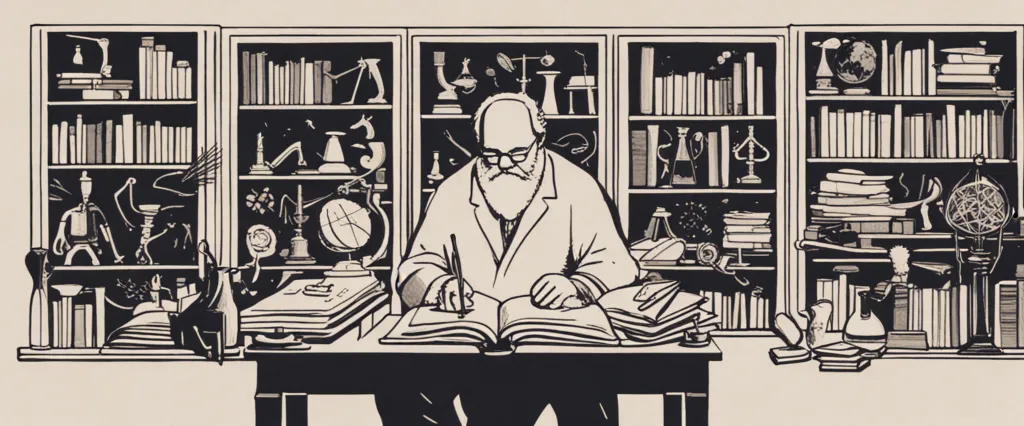In his groundbreaking book, Spontaneous Healing, renowned physician and bestselling author, Dr. Andrew Weil, takes readers on a journey exploring the remarkable capacity of our bodies to heal themselves. Drawing upon years of research and his own personal experiences, Weil unveils the power of the body-mind connection and offers a fascinating insight into alternative medicine and holistic healing. Through compelling anecdotes and scientific evidence, he challenges conventional medical wisdom, urging us to tap into our innate healing abilities and embrace a more integrative approach to wellness. Join Dr. Andrew Weil as he guides us on a transformative exploration of healing beyond the boundaries of traditional medicine.
Chapter 1: Understanding the Healing Process
In Chapter 1 of the book Spontaneous Healing, author Andrew Weil explores the concept of the healing process and how it occurs naturally within the human body. He highlights the importance of understanding and harnessing this inherent healing power to achieve optimal health and well-being.
Weil begins by emphasizing the limitations of Western medicine, which primarily focuses on treating symptoms rather than addressing the underlying causes of disease. He asserts that the body possesses a remarkable ability to heal itself and that this ability should be supported and enhanced, rather than constantly relying on external interventions.
He discusses the intricate relationship between the mind and body, stating that psychological well-being plays a crucial role in physical health. Negative emotions and stress can weaken the immune system, hindering the body’s natural healing mechanisms. On the other hand, positive emotions and a strong mental state can promote healing and overall wellness.
Weil also addresses the role of lifestyle choices in the healing process. He stresses the significance of a healthy diet, regular exercise, and sufficient restful sleep, which all contribute to the body’s ability to heal itself. Additionally, he highlights the importance of incorporating complementary therapies, such as acupuncture and herbal medicine, into one’s healing journey.
Overall, Chapter 1 in Spontaneous Healing introduces the concept of spontaneous healing and emphasizes the vital role of the body’s innate healing process. Weil encourages readers to adopt a holistic approach to health, focusing on the mind-body connection, lifestyle choices, and the integration of complementary therapies to facilitate their own healing journey.
Chapter 2: The Mind-Body Connection
Chapter 2 of the book “Spontaneous Healing” by Andrew Weil focuses on the mind-body connection and its impact on health and healing. Weil believes that our thoughts, emotions, and beliefs have a direct influence on our physical well-being and the ability to heal ourselves.
He begins by discussing the placebo effect, explaining that the mind has a remarkable ability to trigger healing responses in the body. Placebos are inert substances, such as sugar pills, that can sometimes produce real physiological effects when patients believe they are receiving active treatment. This phenomenon demonstrates the power of the mind to influence healing and suggests that our beliefs and expectations play a significant role in the outcome of medical treatments.
Weil delves into the concept of “mind over matter,” presenting evidence that suggests positive emotions and a positive mindset can have a profound impact on health. He explores various studies that connect mental and emotional states with physical well-being, highlighting the link between chronic stress, negative emotions, and the development of diseases.
Moreover, the author stresses the importance of fostering a healthy mind-body connection through practices like meditation, visualization, and relaxation techniques. These methods can activate the body’s natural healing responses, reduce the harmful effects of stress, and promote overall well-being.
Weil also emphasizes the role of personal beliefs and the power of the mind to influence healing outcomes. He suggests that cultivating a sense of spiritual connection or finding meaning in life can enhance the body’s ability to heal.
Ultimately, Chapter 2 presents a comprehensive exploration of the mind-body connection and its influence on the healing process. It encourages readers to recognize the significant impact of their mental and emotional states on their physical health and highlights the potential of harnessing these connections to promote well-being and facilitate spontaneous healing.
Chapter 3: The Power of the Placebo Effect
In Chapter 3 of the book “Spontaneous Healing” by Andrew Weil titled “The Power of the Placebo Effect,” the author delves into the fascinating phenomenon of the placebo effect and its ability to help individuals heal and recover without any active medical treatment.
Weil begins by explaining that the placebo effect occurs when a patient experiences a positive response to a placebo, which is an inactive substance like a sugar pill or saline injection. He emphasizes that the power of belief and the patient’s expectation play crucial roles in this process. Studies have shown that patients who strongly believe in the efficacy of a treatment, even if it is a placebo, can experience significant improvements in their health.
The author presents evidence from numerous research studies demonstrating the placebo effect’s impact on different medical conditions. For instance, he discusses experiments involving patients with Parkinson’s disease who displayed noticeable improvements in their motor functions after receiving placebo treatment.
Weil also explores the ethical dilemma surrounding the use of placebos in medical practice. While placebos are sometimes considered misleading, he argues that harnessing the power of the placebo effect for therapeutic purposes can be highly beneficial. He notes that open-label placebos, where patients are aware they are receiving a placebo, have even shown positive results in clinical trials.
Ultimately, Weil suggests that the placebo effect is not merely about tricking the mind; it highlights the mind’s profound ability to influence the body’s natural healing processes. By understanding and utilizing this effect, healthcare professionals can improve patient outcomes and enhance overall healing potential.
Chapter 4: Harnessing the Healing Power of Nature

Chapter 4 of “Spontaneous Healing” by Andrew Weil is titled “Harnessing the Healing Power of Nature.” In this chapter, Dr. Weil explores the importance of reconnecting with nature as a means of promoting healing and well-being.
Dr. Weil begins by highlighting the inherent healing properties found in the natural world. He emphasizes the need to recognize and appreciate nature’s ability to restore and rejuvenate, urging readers to spend more time in natural environments. He outlines various studies that have demonstrated how exposure to nature can help reduce stress, boost mood, and enhance overall health.
The chapter also delves into the concept of bioenergetics, which involves harnessing the healing energy found in nature. Dr. Weil introduces the Japanese concept of “forest bathing,” which encourages individuals to immerse themselves in the forest atmosphere to reap its therapeutic benefits. He discusses the numerous physical, mental, and emotional benefits associated with this practice, including improved immune function, reduced blood pressure, and increased creativity.
Dr. Weil suggests several ways to incorporate nature into daily life, such as gardening, taking walks in green spaces, or simply spending time in natural settings. He emphasizes the importance of fostering a deep connection with the earth, not only for healing but also for overall balance and well-being.
Overall, this chapter emphasizes the vital role that nature plays in promoting spontaneous healing. It highlights the power of natural environments to restore and heal, urging readers to integrate the healing aspects of nature into their lives for enhanced well-being. Dr. Weil encourages us to embrace the healing gifts nature offers and recognize its ability to support our health and vitality.
Chapter 5: Integrative Medicine and Holistic Healing
Chapter 5 of “Spontaneous Healing” by Andrew Weil explores the concept of integrative medicine and holistic healing. Weil emphasizes the importance of combining conventional and alternative therapies to promote healing and well-being.
The chapter begins by discussing the limitations of modern medicine, particularly its focus on treating symptoms rather than addressing the root causes of disease. Weil argues that this approach often neglects the body’s innate ability to heal itself and suggests that a more integrative approach is needed to facilitate self-healing.
He introduces the concept of “holism,” which views the body as a complex and interconnected system, highlighting the interdependence of physical, mental, emotional, and spiritual well-being. Weil believes that an integrative medicine approach should focus on promoting balance within these aspects to restore health.
Weil also explores various alternative healing techniques that complement conventional medicine, such as acupuncture, herbal medicine, and mind-body practices like yoga and meditation. He presents scientific evidence supporting the effectiveness of these therapies and suggests that they should be integrated into mainstream medical care.
Furthermore, the chapter discusses the importance of patient empowerment and involvement in their healing process. Weil encourages individuals to take responsibility for their health and make lifestyle changes that support well-being, such as adopting a balanced diet, regular physical activity, and stress management techniques.
In conclusion, Chapter 5 of “Spontaneous Healing” promotes the integration of conventional and alternative therapies through a holistic approach. Weil believes that by addressing the underlying causes of illness and incorporating mind, body, and spirit into the healing process, individuals can achieve better health outcomes and actively participate in their own well-being.
Chapter 6: Cultivating a Healthy Lifestyle
Chapter 6: Cultivating a Healthy Lifestyle, from the book “Spontaneous Healing” by Andrew Weil, explores various aspects of living a healthy and balanced life. Weil emphasizes that health is not solely dependent on medical treatments or interventions, but rather a holistic approach that involves making conscious choices in all aspects of life.
The chapter begins by discussing the concept of self-care and its importance in maintaining good health. Weil highlights the significance of healthy eating habits, regular exercise, and adequate sleep as foundational pillars of a healthy lifestyle. He also underscores the benefits of stress reduction techniques such as meditation, deep breathing, and engaging in activities that bring joy and relaxation.
Next, Weil dives into the role of social connections in promoting well-being. He emphasizes the importance of nurturing meaningful relationships, spending time with loved ones, and participating in community activities. Weil explains that social isolation and loneliness can have detrimental effects on both physical and mental health, making it vital to actively seek and maintain positive social connections.
Additionally, the chapter explores the impact of our environment on health. Weil advises avoiding exposure to toxins, pollutants, and other harmful substances as much as possible. He also suggests spending time in nature and incorporating elements such as natural light, fresh air, and greenery into living spaces.
Weil concludes the chapter by discussing the necessity of finding a purpose or passion in life and aligning one’s actions with personal values. He posits that having a sense of purpose and engaging in activities that bring meaning to one’s life can have a profound impact on overall well-being.
Overall, Chapter 6 of “Spontaneous Healing” emphasizes the importance of embracing a holistic approach to health, focusing on self-care, social connections, environmental factors, and finding purpose in life. By consciously cultivating a healthy lifestyle in these areas, individuals can significantly increase their chances of experiencing spontaneous healing and living a vibrant, fulfilling life.
Chapter 7: Exploring Alternative Healing Modalities
Chapter 7 of the book “Spontaneous Healing” by Andrew Weil is titled “Exploring Alternative Healing Modalities.” In this chapter, Weil explores various non-conventional approaches to healing and their potential benefits.
Weil begins by discussing the field of energy medicine, which acknowledges that the human body has an energetic component that can be manipulated for healing purposes. He highlights practices such as acupuncture, which uses fine needles to stimulate specific points on the body to restore balance and promote healing. He also mentions qigong, a Chinese practice that combines movement, breathing, and meditation to promote vitality and well-being.
Next, Weil delves into mind-body techniques, highlighting the power of the mind to influence physical health. He discusses practices such as meditation, relaxation response, biofeedback, and hypnosis. These practices aim to reduce stress, enhance immune function, and facilitate the body’s natural healing abilities.
The chapter further explores the use of herbs and natural substances for healing purposes. Weil emphasizes the importance of using them under proper guidance, as certain plants can be toxic if used incorrectly. He mentions botanicals like St. John’s wort for depression, echinacea for immune support, and ginkgo biloba for cognitive enhancement, among others.
Lastly, Weil examines the role of spiritual and religious practices in healing. He acknowledges the healing power of faith, prayer, and belief systems, which can instill hope, optimism, and a sense of purpose in individuals, positively impacting their health outcomes.
In summary, Chapter 7 of “Spontaneous Healing” explores various alternative healing modalities, including energy medicine, mind-body techniques, herbal remedies, and spiritual practices. Weil provides an informative overview of these modalities, highlighting their potential benefits and underscoring the importance of informed and responsible usage.

Chapter 8: Nurturing Emotional and Spiritual Well-being
Chapter 8 of “Spontaneous Healing” by Andrew Weil explores the significance of nurturing emotional and spiritual well-being as an essential component of overall health and healing. Weil highlights that traditional medicine often overlooks the importance of these aspects and focuses predominantly on physical symptoms and treatments.
The chapter begins by emphasizing the interconnectedness of the mind, body, and spirit. Weil stresses that emotional and spiritual states have a profound impact on physical well-being and can either contribute to or hinder the healing process. He encourages readers to explore their psychological and spiritual selves in order to enhance their overall health.
Weil also discusses the negative impact of stress on the body, noting that chronic stress can lead to various physical and mental illnesses. He emphasizes the importance of stress reduction techniques such as meditation, deep breathing, and mindfulness practices. These techniques aid in calming the mind and allowing the body to heal.
Furthermore, the chapter delves into the concept of spirituality and its significance in healing. Weil argues that spirituality, regardless of religious affiliation, is integral to cultivating a sense of purpose, connection, and hope. He suggests incorporating various spiritual practices into daily life, such as engaging in nature, practicing gratitude, or participating in community activities, to nurture spiritual well-being.
Finally, Weil discusses the power of laughter, love, and human connection in promoting healing. He emphasizes the positive effects of social support, healthy relationships, and a sense of humor on overall well-being. Genuine laughter and love release endorphins, reduce stress, and improve immune function.
In summary, Chapter 8 of “Spontaneous Healing” highlights the significance of nurturing emotional and spiritual well-being for overall health and healing. Weil emphasizes the importance of stress reduction, spirituality, and positive social connections in promoting well-being. By attending to these aspects of ourselves, individuals can support and enhance their body’s innate healing mechanisms.
After Reading
In conclusion, “Spontaneous Healing” by Andrew Weil provides a comprehensive exploration of the body’s innate ability to heal itself. Weil emphasizes the importance of integrating conventional medicine with alternative therapies, such as mind-body practices and nutrition, to enhance healing processes. He highlights real-life stories and scientific evidence to support the notion that the mind, body, and spirit are interconnected in the healing journey. Weil’s book is an empowering guide that encourages readers to take an active role in their own health and well-being, ultimately leading to a greater understanding and appreciation of the body’s natural healing capabilities.
1) “The Healing Power of Mindfulness: A New Way of Being” by Jon Kabat-Zinn – This book explores the transformative effects of mindfulness on physical and emotional well-being. Drawing on scientific research and personal anecdotes, Kabat-Zinn provides practical techniques to cultivate mindfulness and harness its healing potential.
2) “You Can Heal Your Life” by Louise Hay – In this classic self-help book, Louise Hay explores the mind-body connection and the power of positive affirmations in promoting healing. Through personal stories and exercises, she guides readers to identify and release emotional blockages that may be contributing to physical ailments.
3) “The Body Keeps the Score: Brain, Mind, and Body in the Healing of Trauma” by Bessel van der Kolk – This groundbreaking book examines the impact of trauma on the body and proposes holistic approaches for recovery. Dr. van der Kolk combines scientific insights, case studies, and innovative therapies to offer a deep understanding of trauma-related disorders and their potential healing pathways.
4) “Mind Over Medicine: Scientific Proof That You Can Heal Yourself” by Lissa Rankin, M.D. – Dr. Rankin explores the power of the mind-body connection and its influence on health outcomes in this thought-provoking book. Through captivating stories and scientific evidence, she presents a compelling argument for the role of self-healing and offers practical tools to tap into this innate capability.
5) “The Biology of Belief: Unleashing the Power of Consciousness, Matter & Miracles” by Bruce H. Lipton – Dr. Lipton, a cell biologist, delves into the profound influence of our thoughts and beliefs on our biology. Exploring the concept of epigenetics, he explains how our perception of the world can shape our genes and impact our health. This book offers empowering insights into the potential for self-directed healing.




